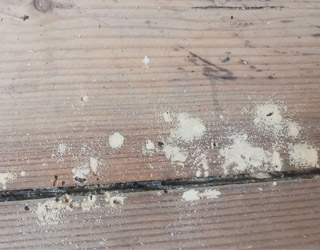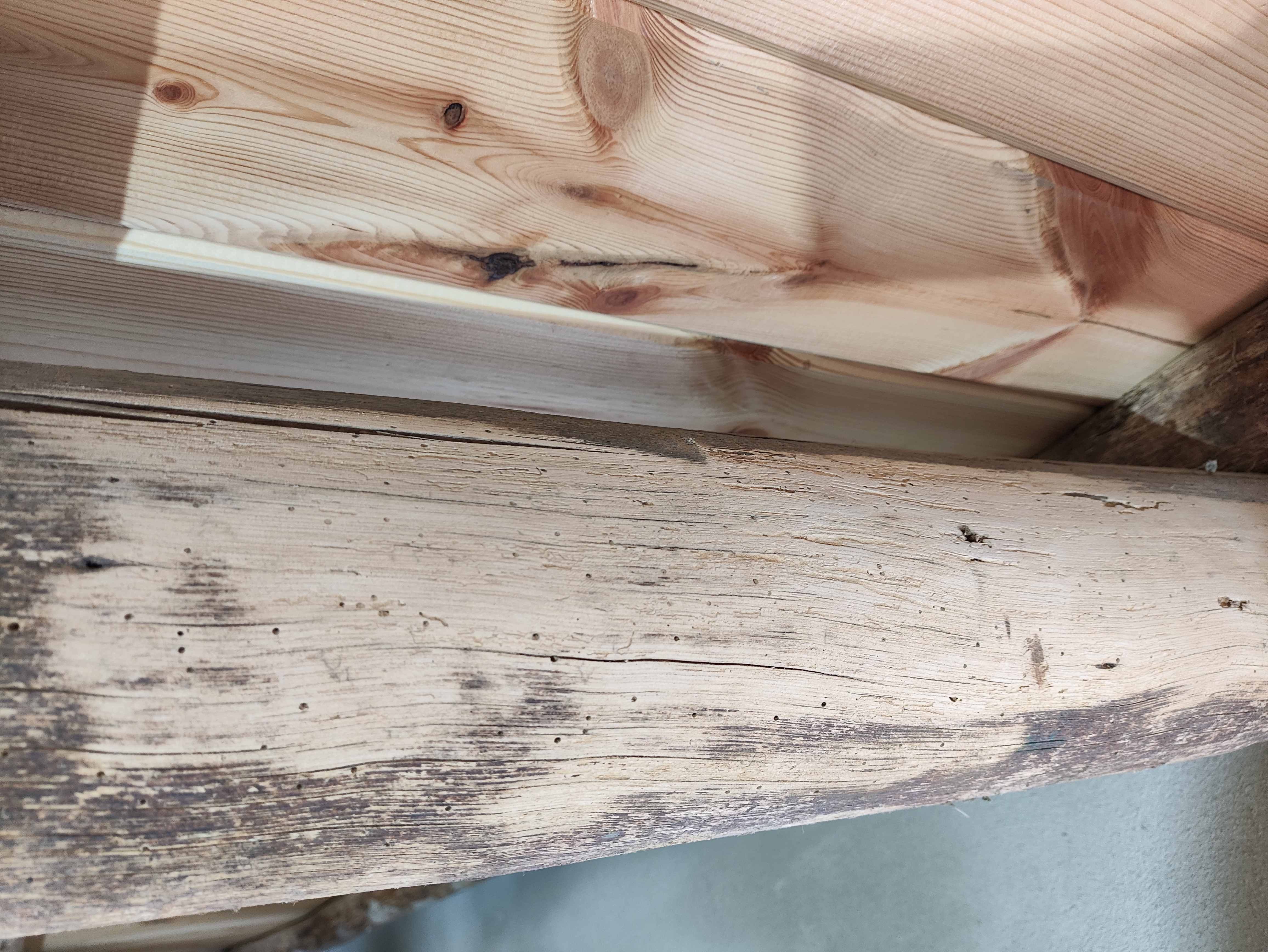To be sure for yourself, you require two experts. 1: Get someone in to do a woodworm survey to check if there is an active infestation. There are a couple of easy checks you can do to make sure a 'specialist' doesn't try to con you. First is to get some paper and tape it to the underside of the wood, leave it a while and if little pellets appear on the paper then there are active woodworm in there. Second is a wood moisture sensor, from what I remember dry wood isn't palatable to woodworm but I could be wrong on that so do some reading. If there aren't any signs then it could have been there for a long time, depending on how old the building is. 2. You've said somewhere else that you'll be putting some stuff above it, if that concerns you then get a structural engineer to take a look at it. They can tell you if it's anything to worry about.
if that concerns you then get a structural engineer
I did get one, and we decided to replace everything. Thank you
Structurally, the beams may be fine (based on the pic you shared). It's also possible that those holes have been there since the beginning.
Are you wanting to recover them aesthetically? Are there any signs of active infestation?
It’s also possible that those holes have been there since the beginning> I have no way to know because I only purchased the house 2 years ago.
Are you wanting to recover them aesthetically?> I have the money ready if I need to replace them. And I would rather replace than waste time recovering them with wood filler.
Are there any signs of active infestation?> I have not seen any bugs, but I don't know if they are inside.
I would leave them as is, assuming they are exposed beams and I could continue to monitor them. I think worm holes lend to the charm of exposed-wood homes.
I would definitely investigate whether there is an active infestation though, or treat all wood as if there were and then monitor for any developments.
or treat all wood as if there were and then monitor for any developments
If I did that, would the upper floor have any risk of collapsing? Because the wood seems to be hollow.
Unfortunately, I can't make that call from the one pic, but I would be surprised if that ratio of holes resulted in a hollowed beam. Termites, sure, but not woodworm.
Ultimately, if you won't sleep well with the old wood in place, then there's your answer.
Well, I will be putting workbenches with lab power supply, oscilloscope, desktop, monitor, etc... on top of that floor. I would not want to get home one day, and have everything in the dining room from a collapsed floor. But I see what you mean...
Are we looking at the bottom of the wood floor in this picture?
Yes. You are looking at the beams that hold the upper hardwood floor. What do you think I should do?
Woodworking attacks the outside layer of wood. They dont really eat deep into the piece.
If you don't see any of the worm frass anywhere then that looks to be old worm damage.
Wrap a length of beam in brown paper and wait a few weeks. If there is no worm dust (frass) then I would leave it be.
 (The frass is the powdery dust)
(The frass is the powdery dust)
If you are still super worried, you could always replace one beam and cut it up to see the inside.
That seems like great advice. But since we have already deviced to replace everything, I will just cut the wood and inspect the inside. Maybe I will post an update afterwards. Thank you
Woodworking
A handmade home for woodworkers and admirers of woodworkers. Our community icon is submitted by @1985MustangCobra@lemmy.ca whose father was inspired to start woodworking by Norm and the New Yankee Workshop.
